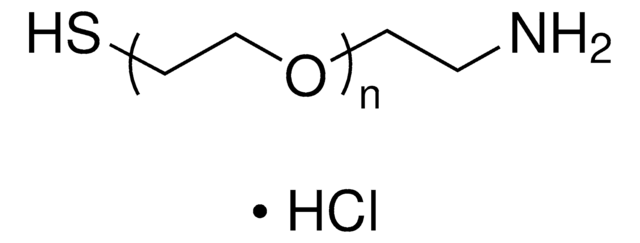Wichtige Dokumente
901941
Thiol poly(ethylene glycol)-block-poly(lactide-co-glycolide)
PEG average Mn 5,000, PLGA average Mn 15,000, lactide:glycolide 50:50
Synonym(e):
Thiol-PEG-b-PLGA, Thiol-PEG-PLGA
About This Item
Empfohlene Produkte
Beschreibung
Identity: Conforms to structure
Form
powder
Zufuhrverhältnis
lactide:glycolide 50:50
lactide:glycolide 50:50±5 (by NMR)
Mol-Gew.
PEG Mn 4000-6000 g/mol (by NMR)
PEG average Mn 5,000
PLGA Mn 13500-16500 g/mol (by NMR)
PLGA average Mn 15,000
Farbe
white
Lagertemp.
−20°C
Verwandte Kategorien
Anwendung
Lagerklassenschlüssel
11 - Combustible Solids
WGK
WGK 3
Flammpunkt (°F)
Not applicable
Flammpunkt (°C)
Not applicable
Hier finden Sie alle aktuellen Versionen:
Analysenzertifikate (COA)
Die passende Version wird nicht angezeigt?
Wenn Sie eine bestimmte Version benötigen, können Sie anhand der Lot- oder Chargennummer nach einem spezifischen Zertifikat suchen.
Besitzen Sie dieses Produkt bereits?
In der Dokumentenbibliothek finden Sie die Dokumentation zu den Produkten, die Sie kürzlich erworben haben.
Kunden haben sich ebenfalls angesehen
Unser Team von Wissenschaftlern verfügt über Erfahrung in allen Forschungsbereichen einschließlich Life Science, Materialwissenschaften, chemischer Synthese, Chromatographie, Analytik und vielen mehr..
Setzen Sie sich mit dem technischen Dienst in Verbindung.






